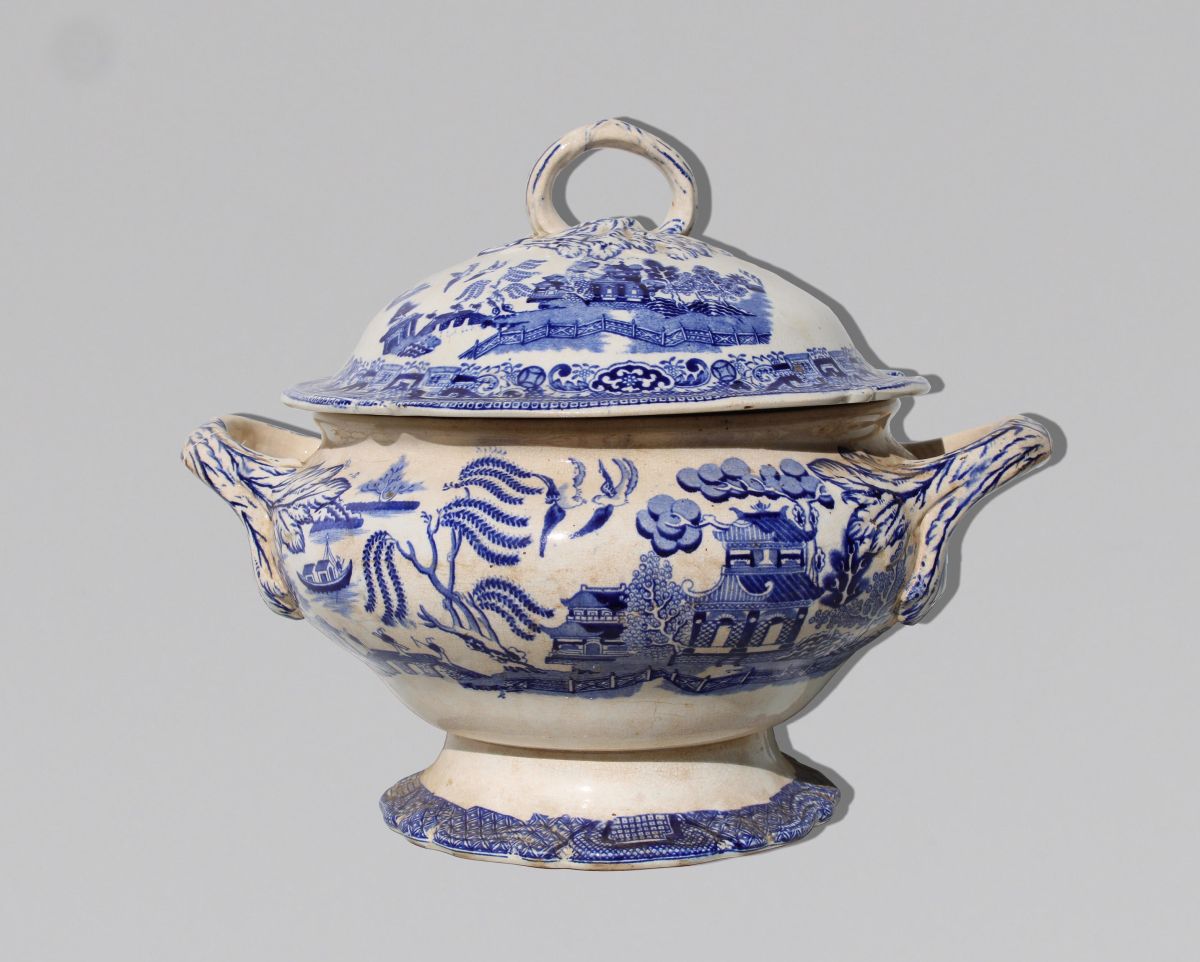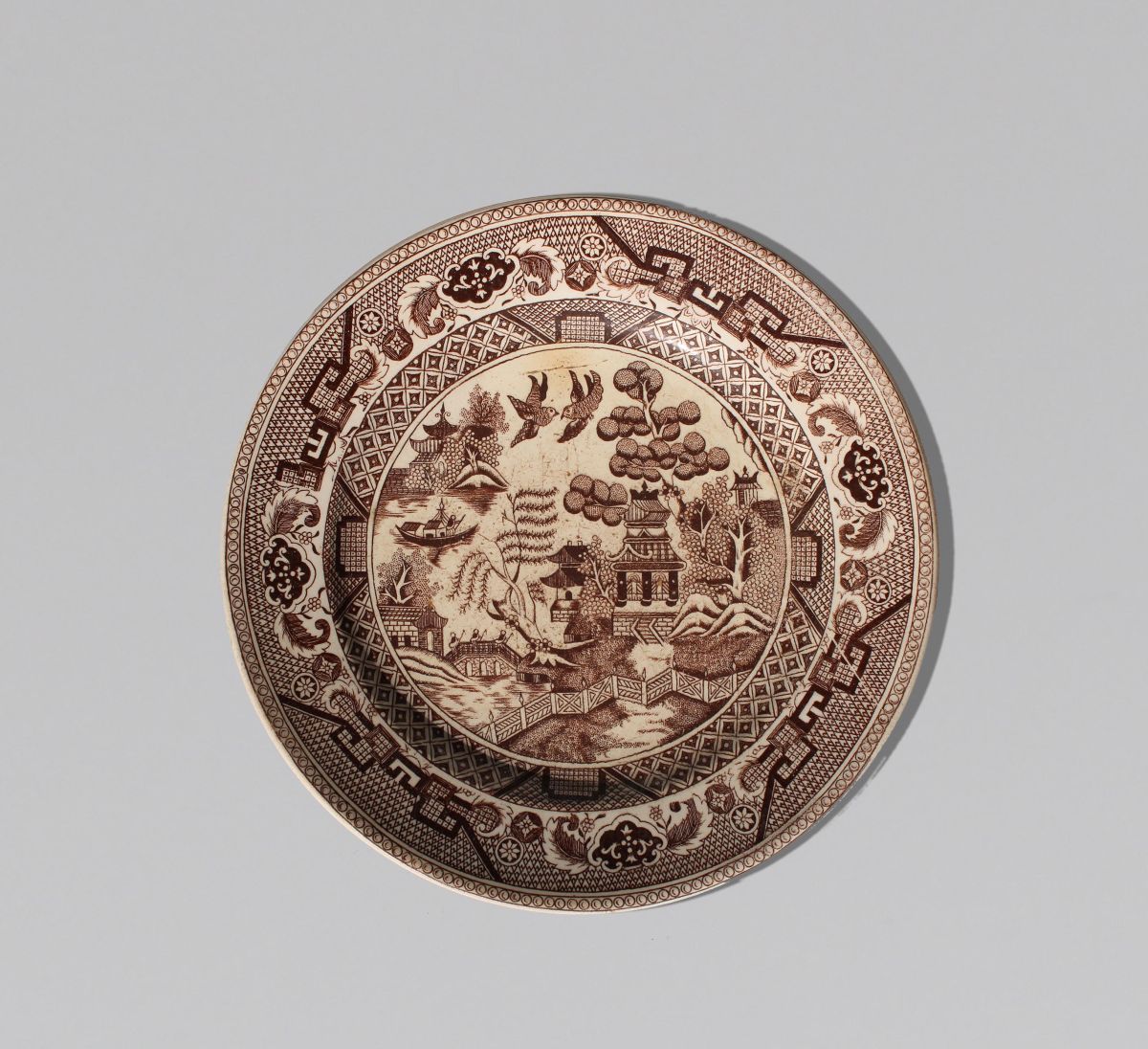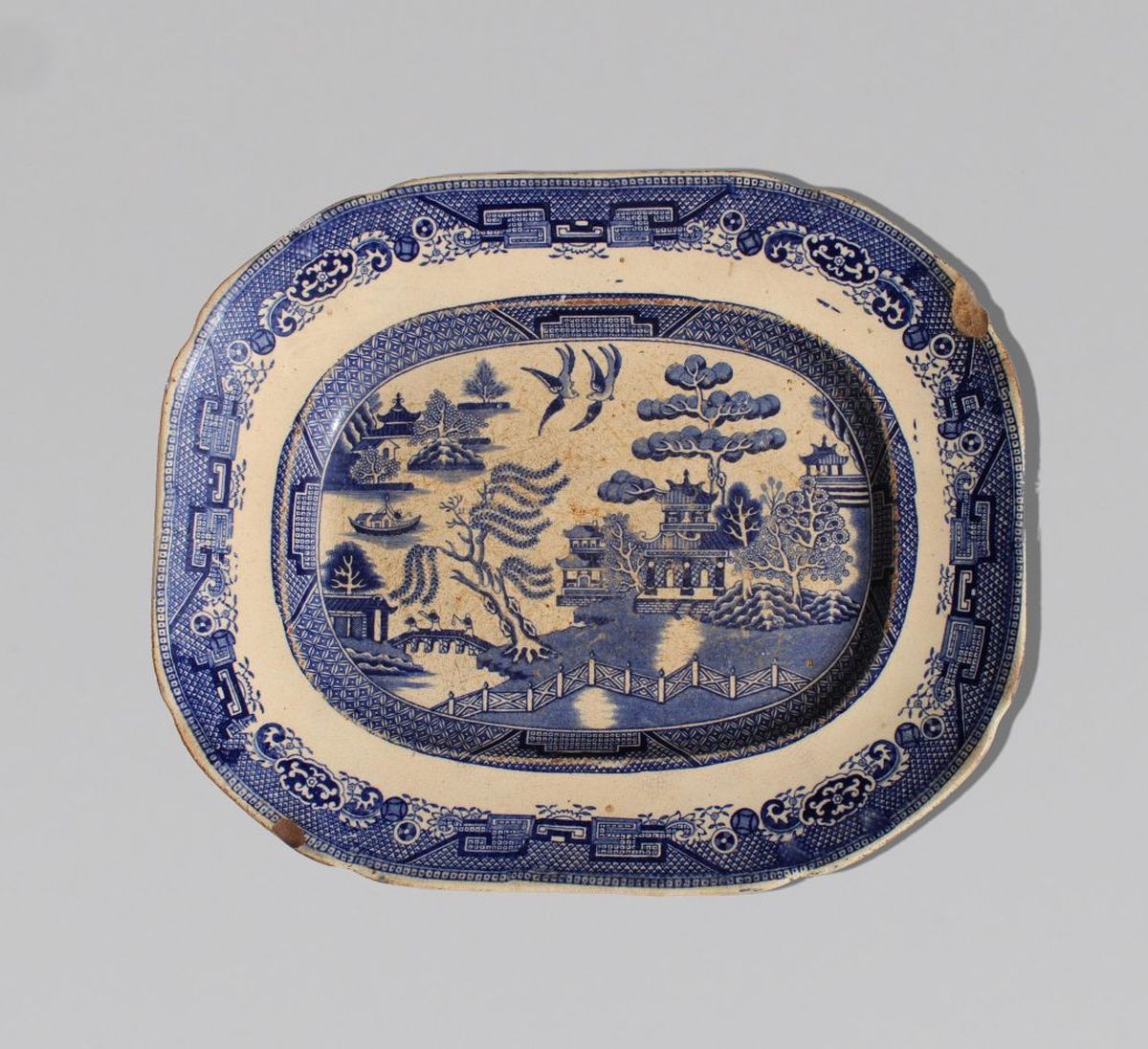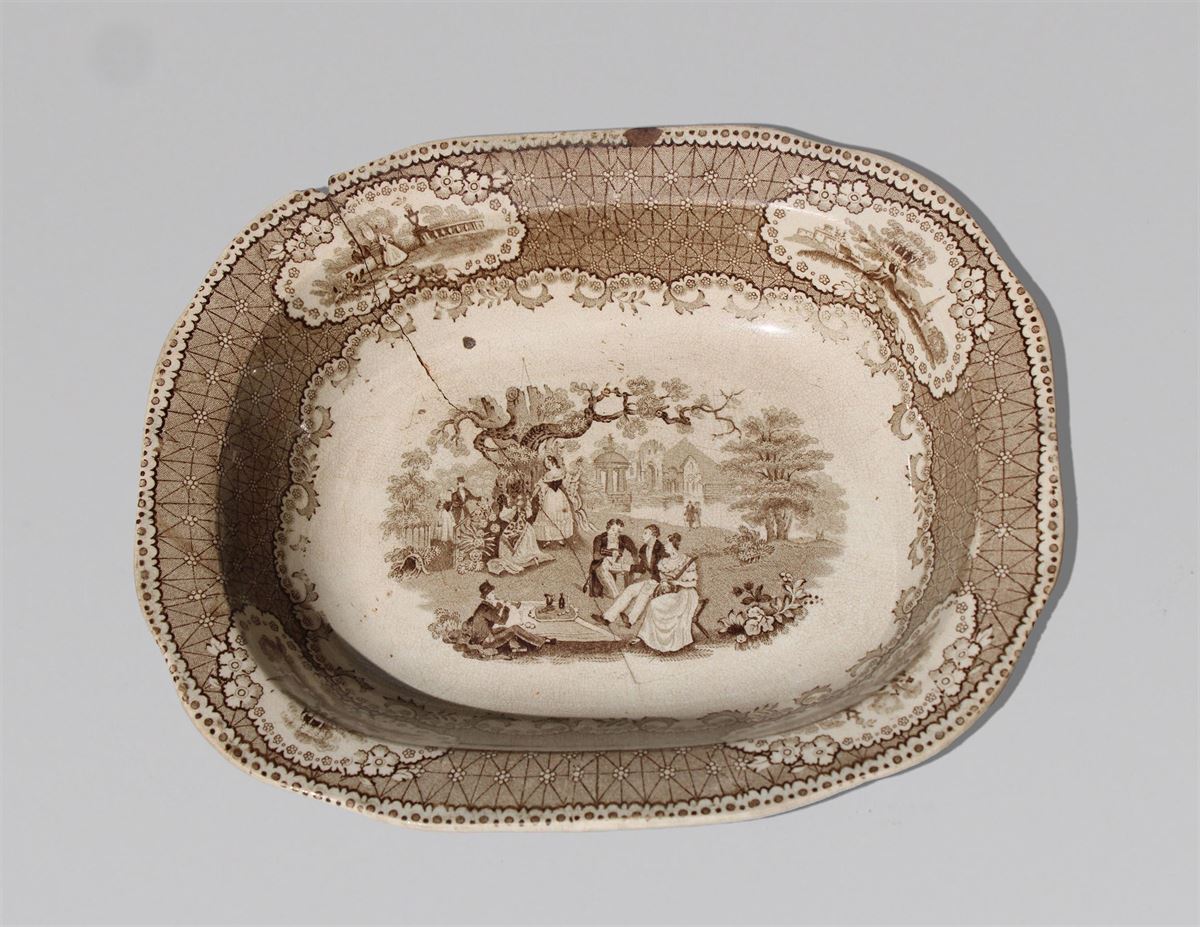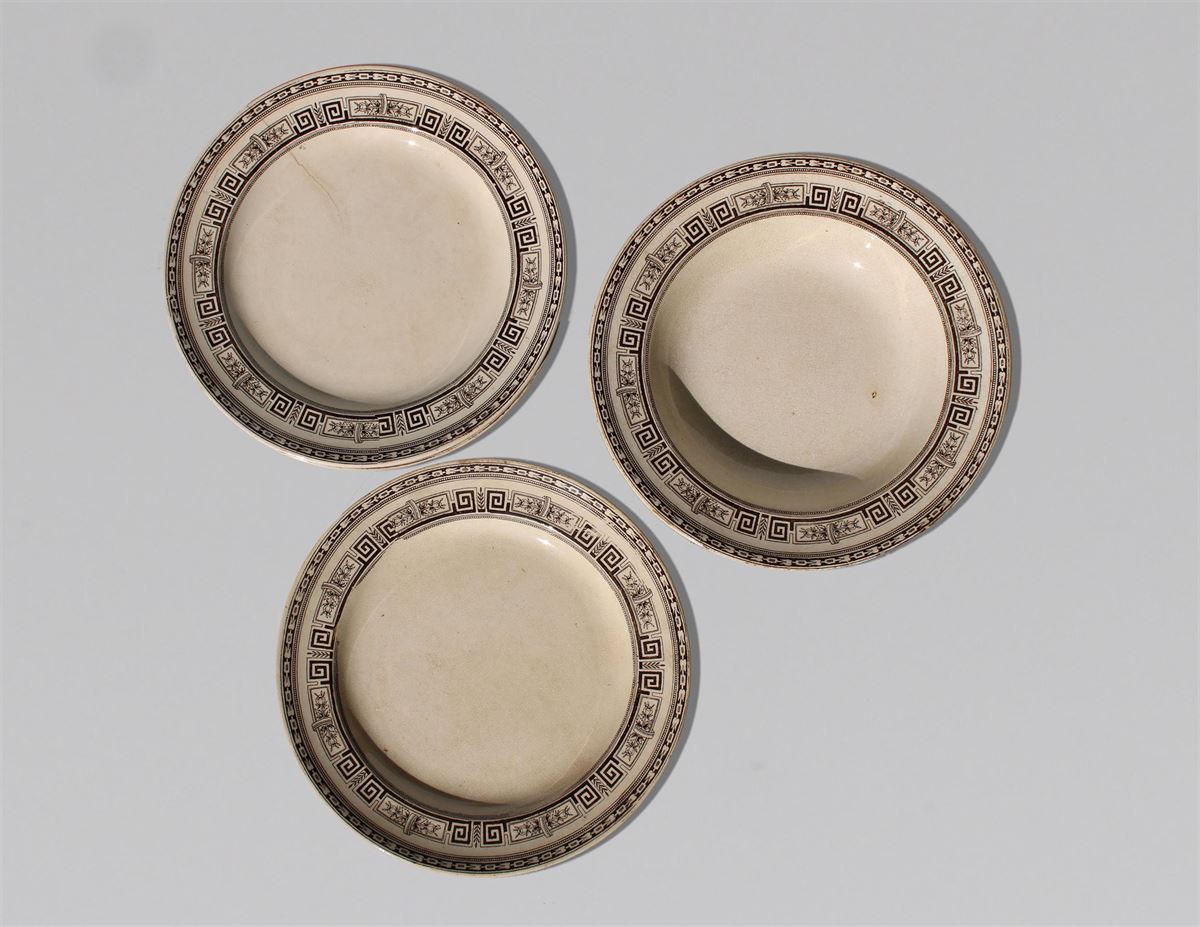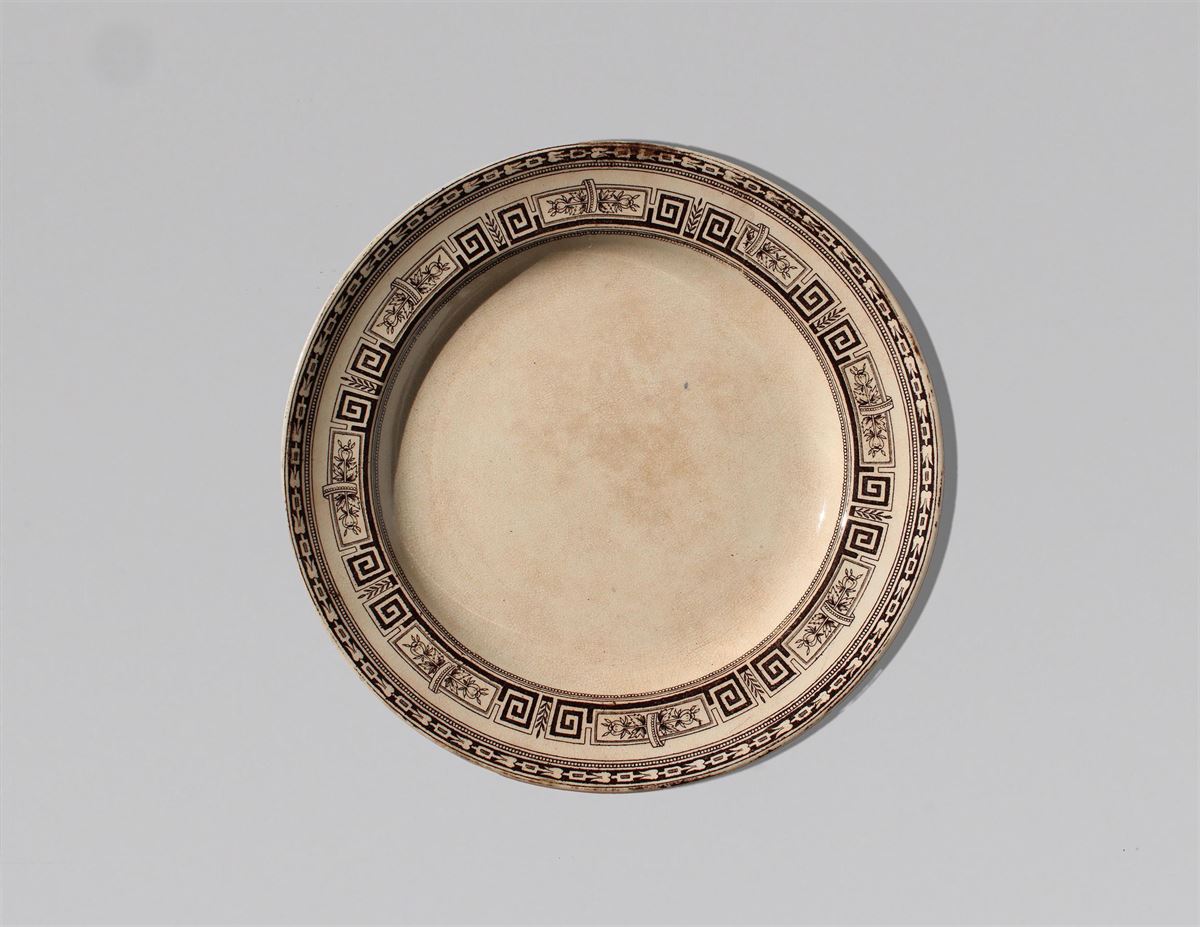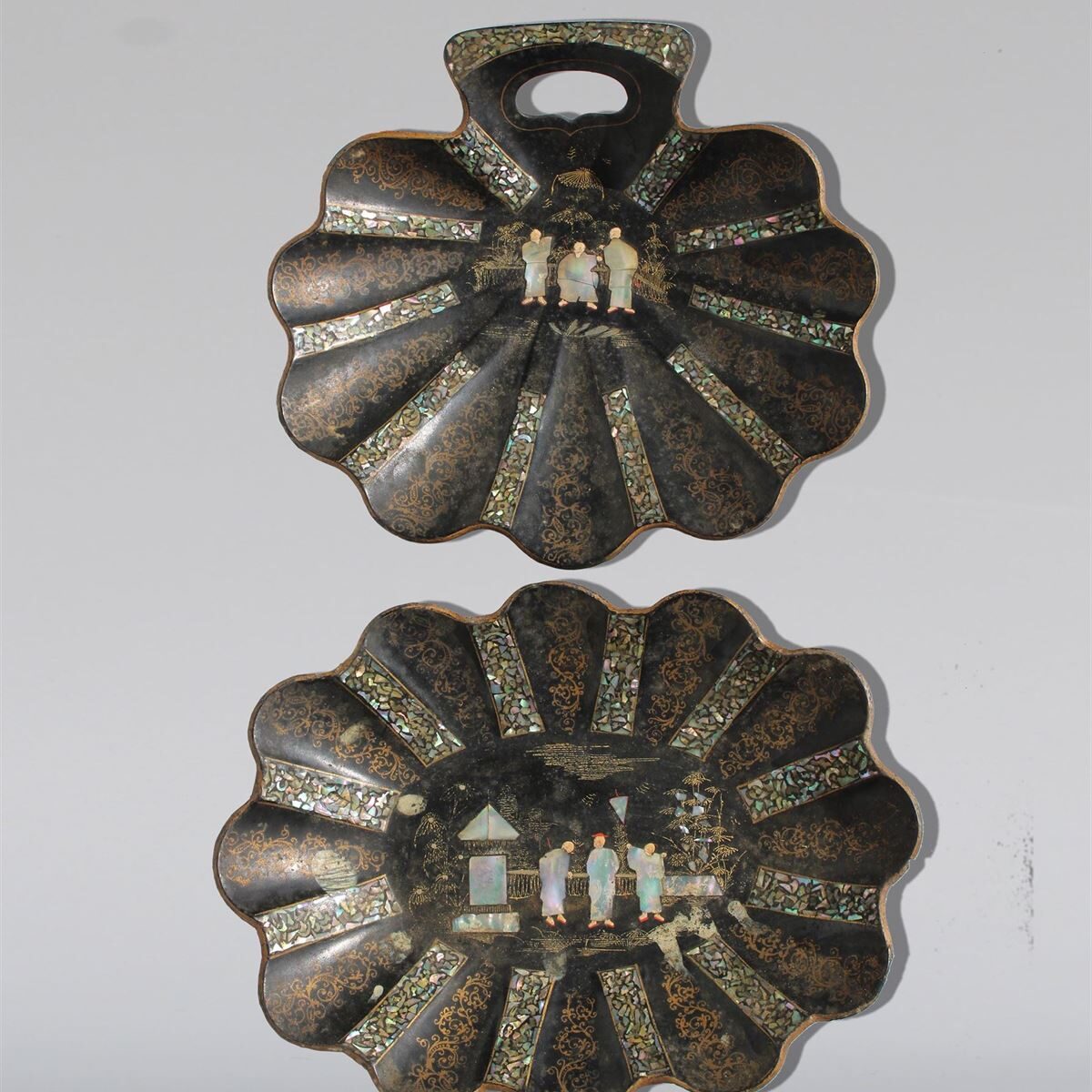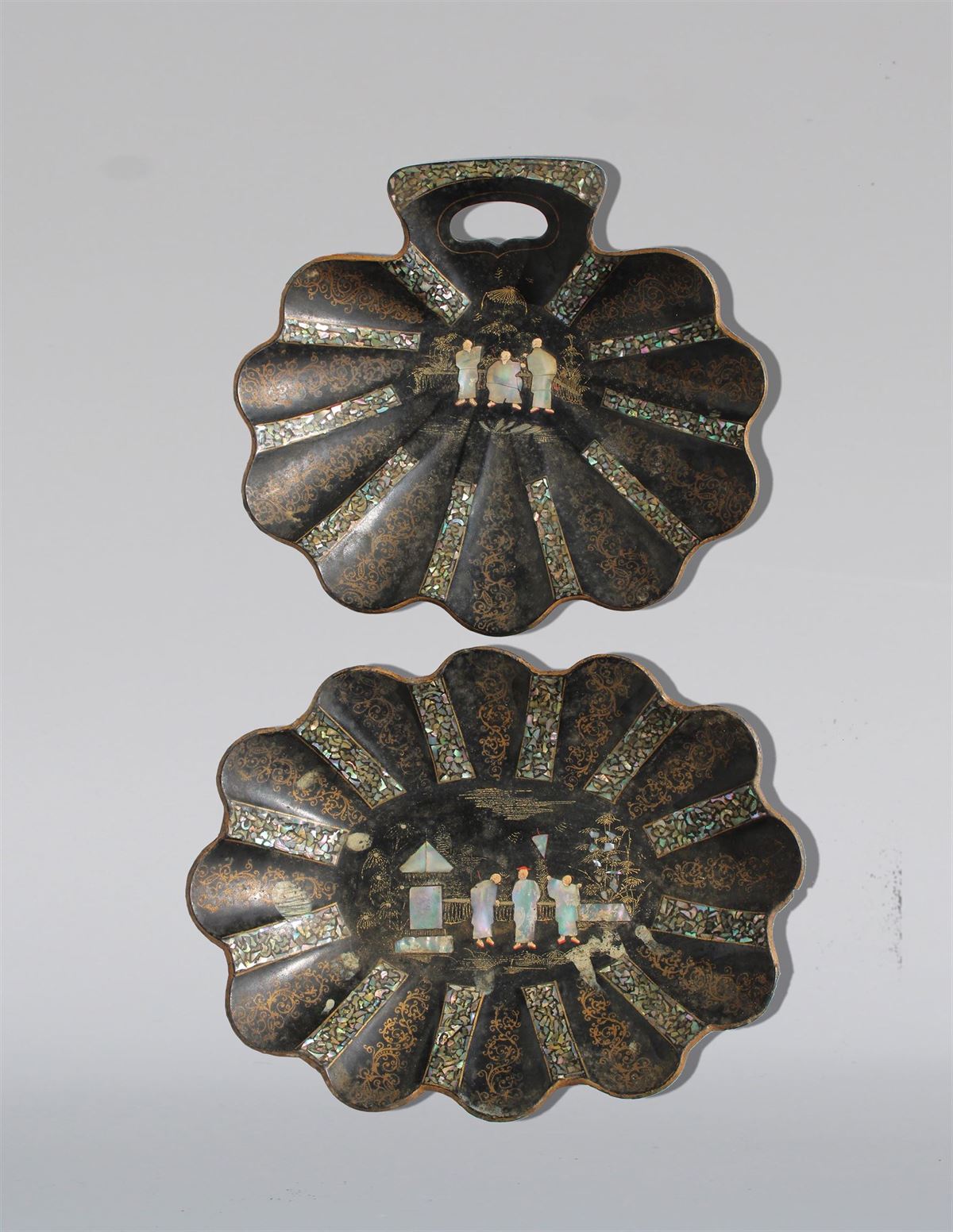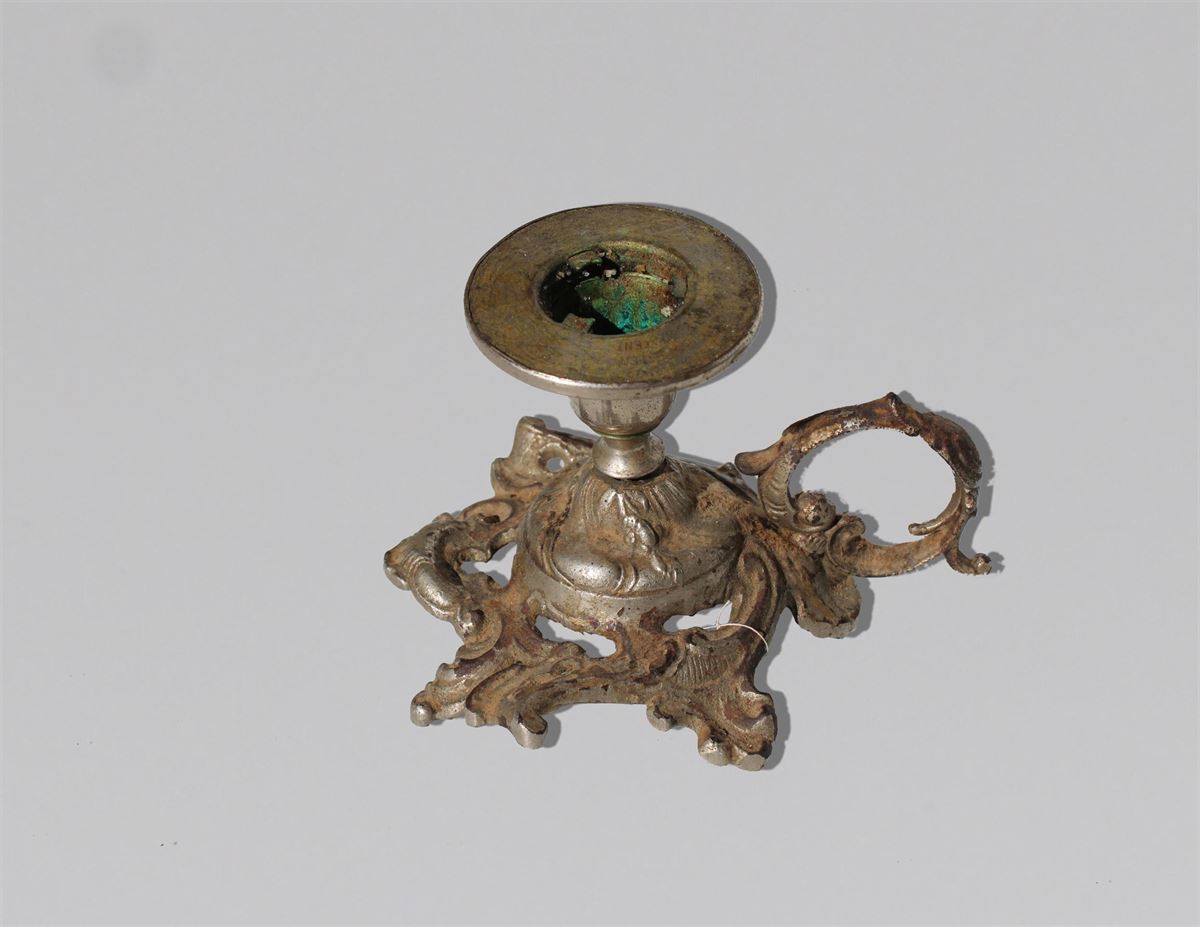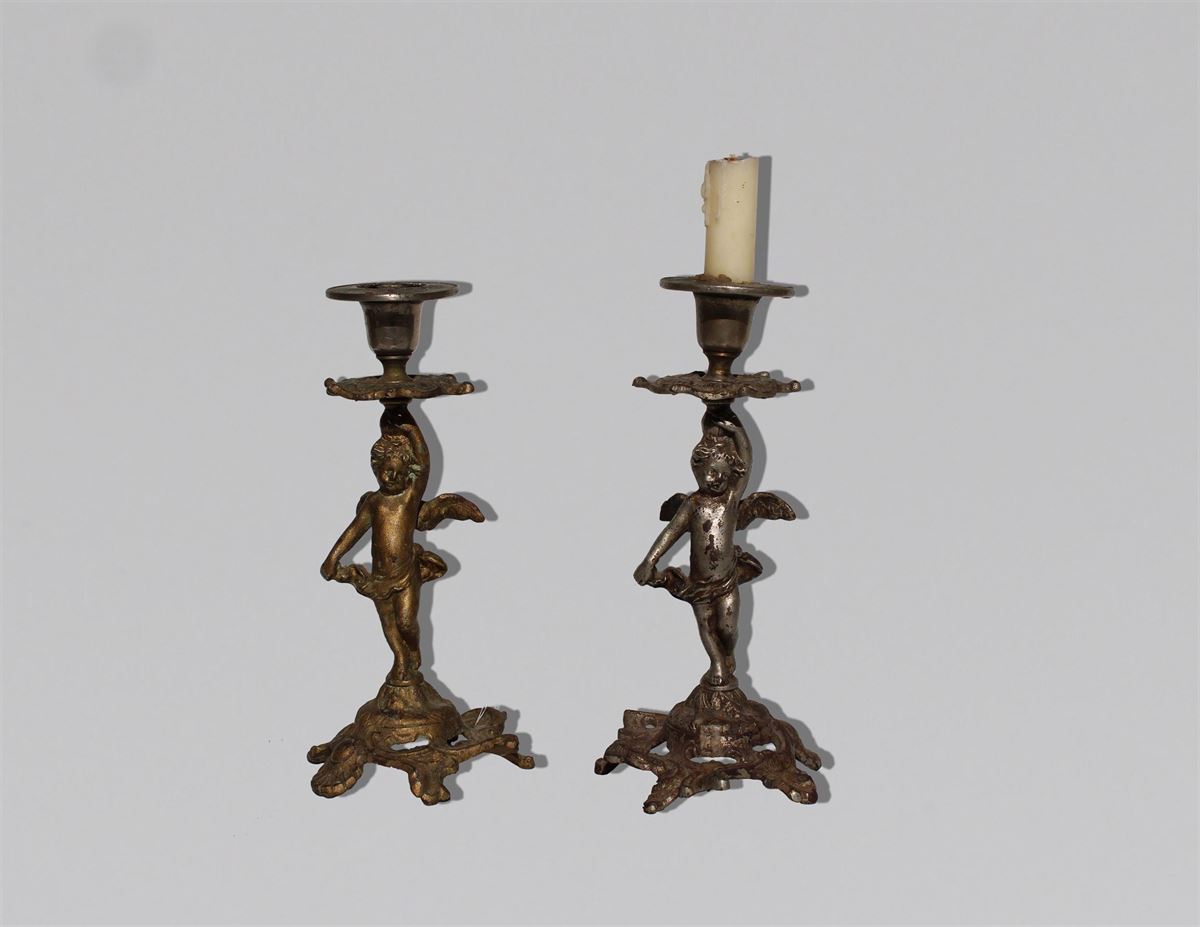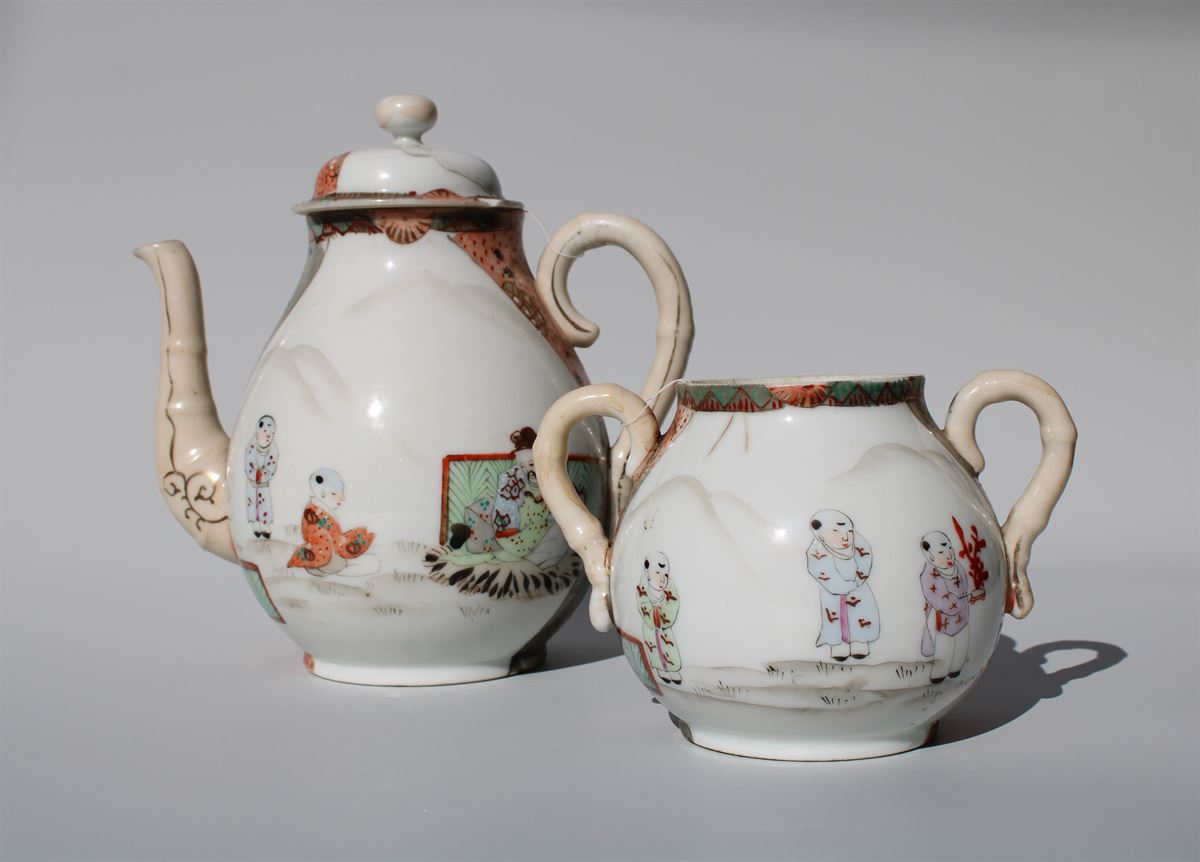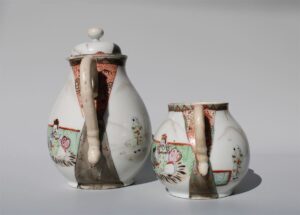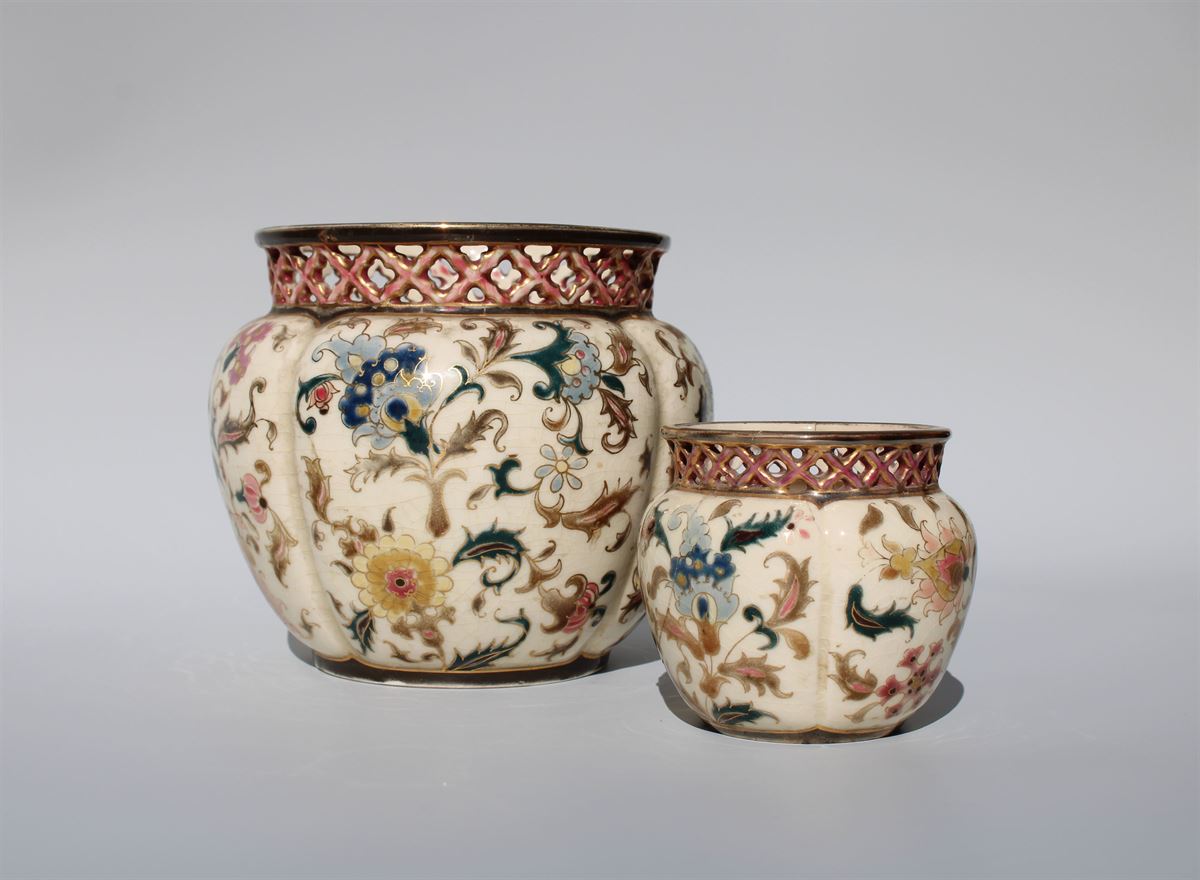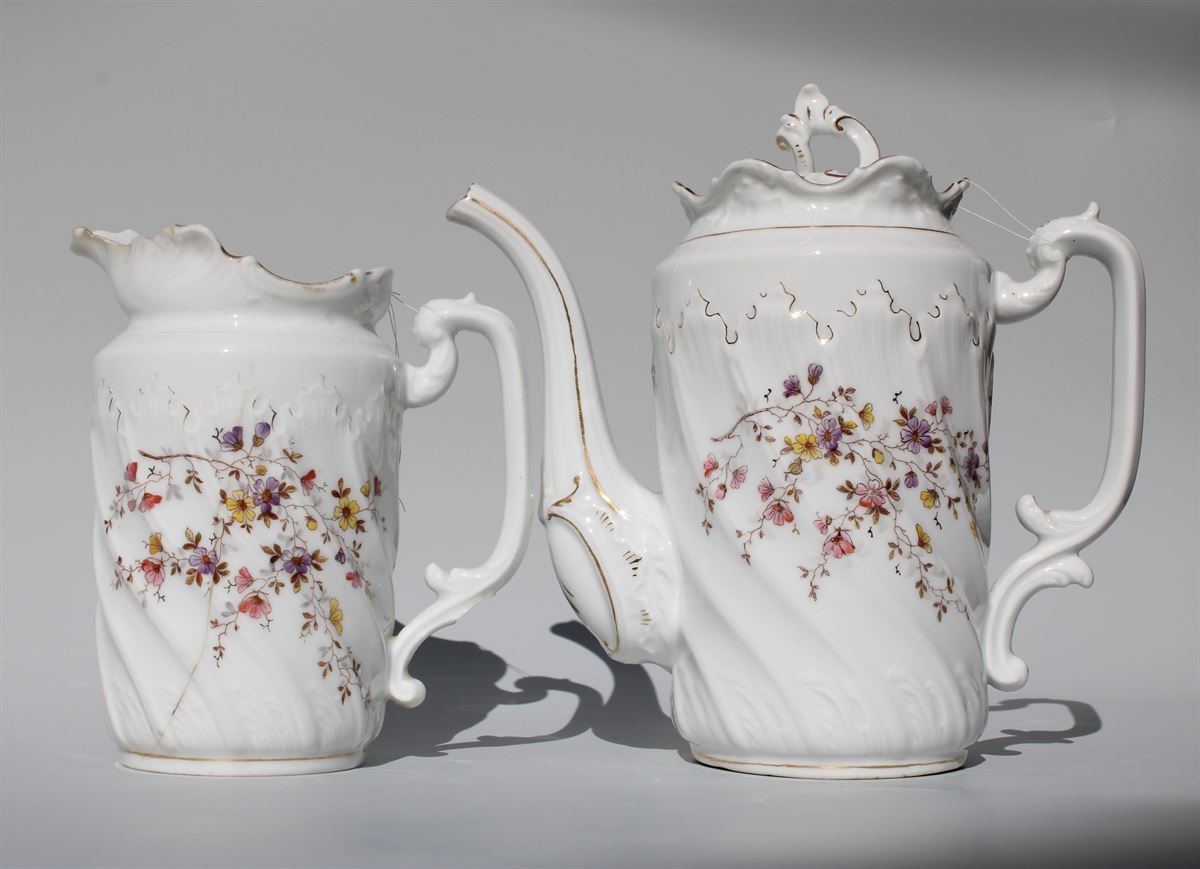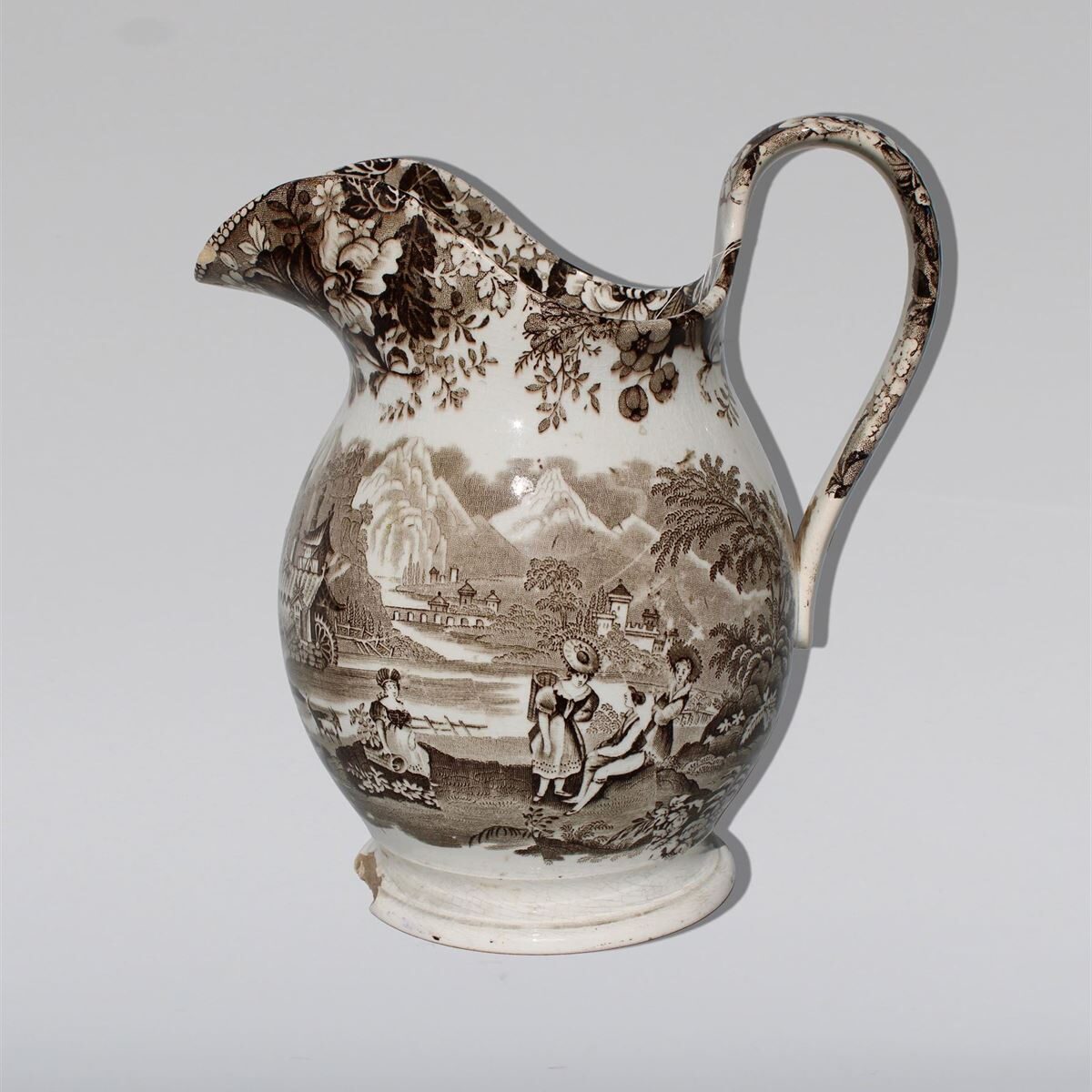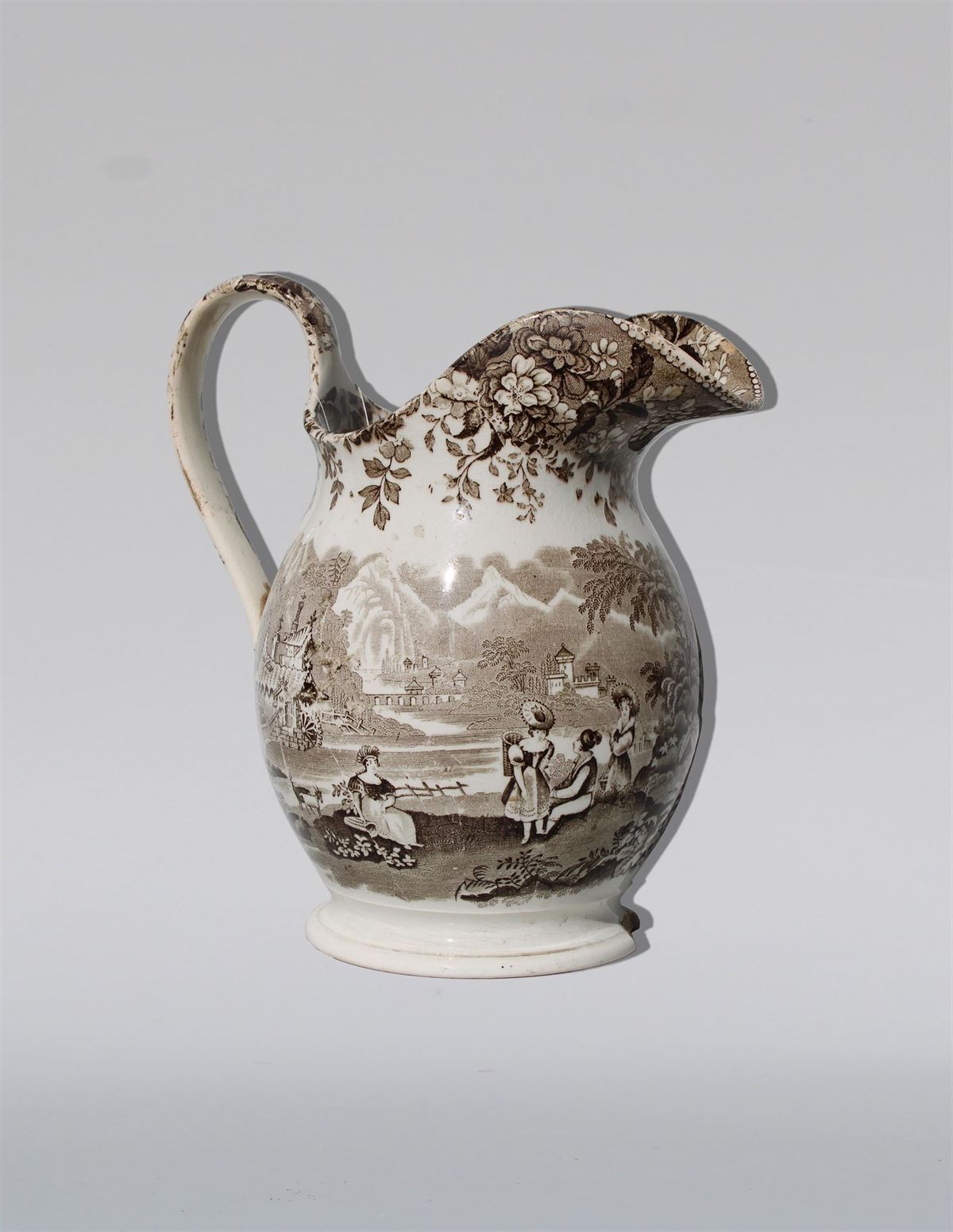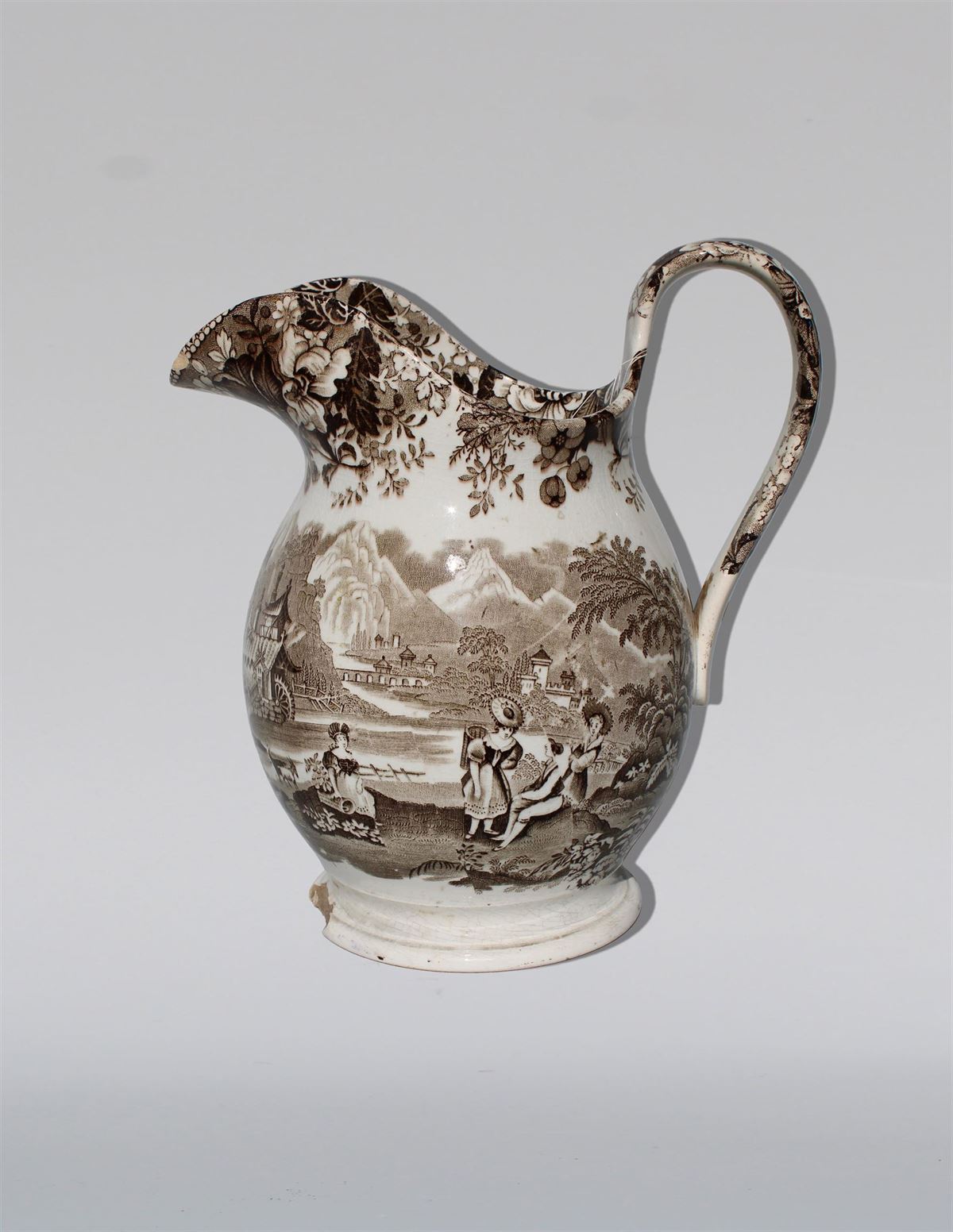tablica
| Inventory numbers: KB-171(1-2), KB-359 and KB-362 |
| Material: porcelain |
| Dimensions: KB-171 32 x 25 x 24.5 cm; KB-359 23.3 x 2.9 cm; KB-362 29 x 24 x 3.2 cm |
| Dating: second half of the 19th century |
| Origin: England |
Središnji sadržaj
In the Collection of Furniture and Household Objects at the Bukovac House, there are three vessels featuring a specific theme known as Blue Willow. According to legend, the daughter of a Chinese magnate fell in love with his secretary. When her father found out, he banished the secretary and built a massive fence around his property to prevent his daughter from escaping. During that time, she could only walk by the water and the willow trees. She was desolate until her lover sent her a secret letter with an escape plan. After a banquet, they fled, pursued by her father across a bridge. They managed to escape, but a few years later, her father found and killed the secretary. The daughter also died shortly thereafter, and the gods, taking pity on their tragic fate, transformed them into doves so they could always fly together.
The motif of the blue willow is easily recognisable as the vessels depict specific parts of the story: two doves, a bridge, a stream, a willow tree, and a fence.
This motif became popular on transferware pottery from the mid-19th century. However, without a specific manufacturer’s mark, it is challenging to determine the exact production time of our vessels since over 500 manufacturers produced and used this motif.
The Bukovac House Collection contains three pieces: two blue and one black. Pottery produced in England has been marked with a seal since 1891, while earlier pieces often have no markings at all. Our specimens at the Bukovac House lack markings, thus they can most likely be dated to the second half of the 19th century.


